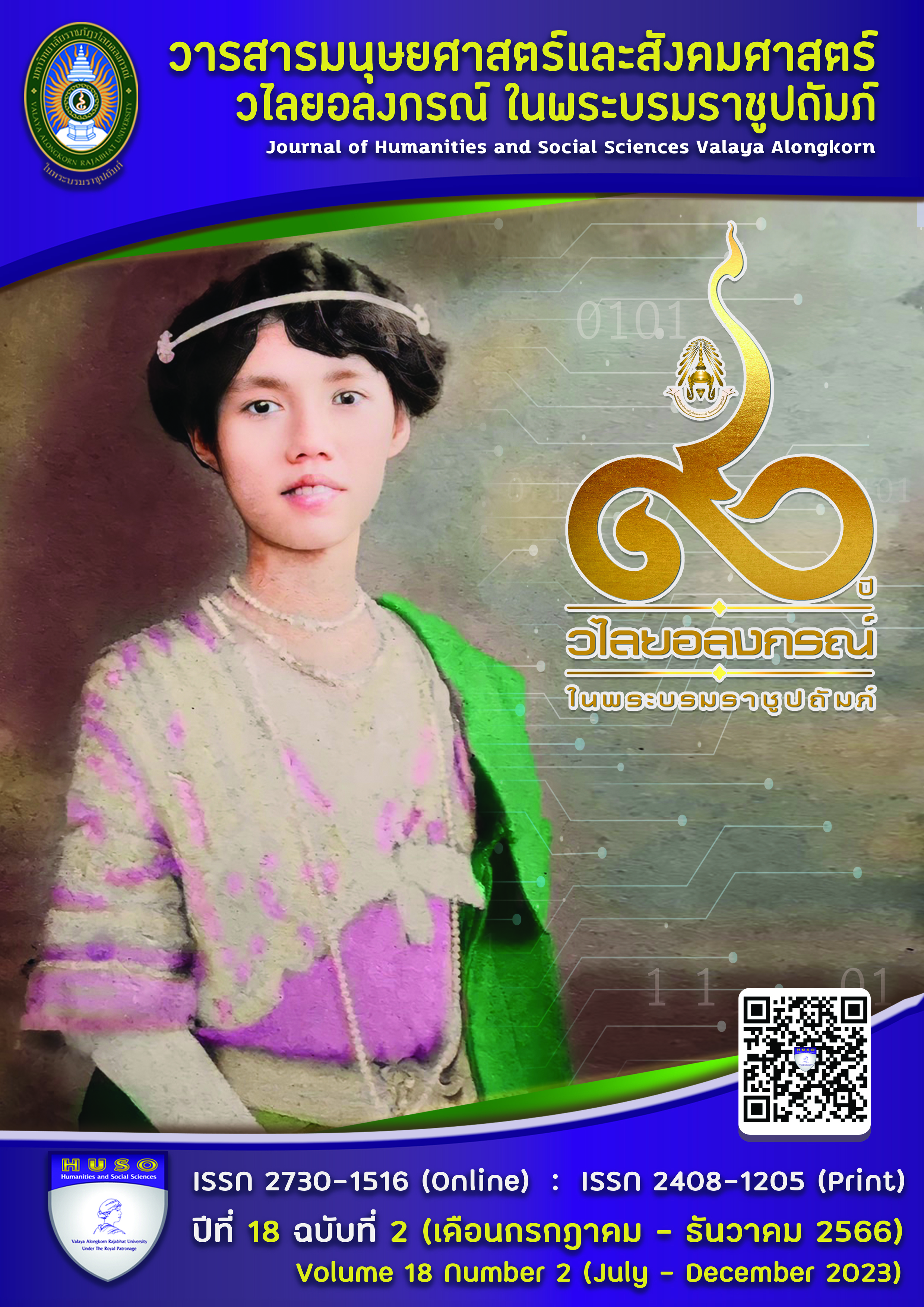SOVIET GOVERNMENT ANTI-ISLAMIC POLICY FROM 1917 TO 1941 BY POLITICAL COMMUNICATION STRATEGY IN KAZAKHSTAN
Main Article Content
Abstract
This research studied political characteristics of the Soviet Union (USSR) towards Islam and Kazakh believers during the revolutionary era and analyzed Soviet anti-Islamic political communication in Kazakhstan from 1917 to 1941. Communication strategies outlined by Everett M. Rogers were used as analytical framework for this qualitative research. Results were that the USSR political character towards Islam and Kazakh believers between 1917 and 1928 comprised policy compromise, preservation of Islamic belief culture in Kazakh society in the early days and conflict avoidance to retain Kazakh popular support. Government political communications about Islam in Kazakhstan from 1929 to 1941 consisted of: 1) as senders, the Soviet government, League of Militant Atheists, Koshchi Union, and anti-religious organizations; 2) messages with information expressing anti-USSR hostility, degradation of human dignity, promoting the capitalist system and emphasis on counterrevolutionary doctrines; 3) as media, official documents, Bezbozhnik newspaper and periodical, as well as Antireligioznik periodical, academic channels and slogan use; 4) an audience of Muslim Kazakhs in Kazakhstan; 5) as a result, most of the Kazakh population retained Islamic beliefs and led daily lives adhering to religious principles; 6) a reverse effect in which the government perceived that anti-religious efforts to change beliefs were ineffective due to lack of cooperation from inhabitants of Kazakhstan. This research reveals the significance of Islam in Kazakhstan. Therefore, Thai organizations should develop a model for cultural relations, particularly within the framework of Islamic cooperation, in a bilateral context with Kazakhstan.
Article Details

This work is licensed under a Creative Commons Attribution-NonCommercial-NoDerivatives 4.0 International License.
ลิขสิทธิ์บทความวิจัยที่ได้รับการตีพิมพ์เผยแพร่ในวารสารมนุษยศาสตร์และสังคมศาสตร์ วไลยอลงกรณ์ ในพระบรมราชูปถัมภ์ ถือเป็นกรรมสิทธิ์ของคณะมนุษยศาสตร์และสังคมศาสตร์ มหาวิทยาลัยราชภัฏวไลยอลงกรณ์ ในพระบรมราชูปถัมภ์ ห้ามนำข้อความทั้งหมดหรือบางส่วนไปพิมพ์ซ้ำ เว้นแต่จะได้รับอนุญาตจากมหาวิทยาลัยเป็นลายลักษณ์อักษร
ความรับผิดชอบ เนื้อหาต้นฉบับที่ปรากฏในวารสารมนุษยศาสตร์และสังคมศาสตร์ วไลยอลงกรณ์ ในพระบรมราชูปถัมภ์ เป็นความรับผิดชอบของผู้นิพนธ์บทความหรือผู้เขียนเอง ทั้งนี้ไม่รวมความผิดพลาดอันเกิดจากเทคนิคการพิมพ์
References
นันทพร วงษ์เชษฐา. (2565). การสื่อสารทางการเมือง: มิติตะวันตก. สำนักพิมพ์มหาวิทยาลัย ธรรมศาสตร์.
ยุทธพร อิสรชัย. (2559). แนวคิดการสื่อสารทางการเมือง. เอกสารประกอบการสอน หน่วยที่ 8. มหาวิทยาลัยสุโขทัยธรรมาธิราช.
หอมหวล บัวระภา. (2555). พระพุทธศาสนาลาวภายใต้อุดมการณ์สังคมนิยม 2518-2533. วารสารมนุษยศาสตร์สังคมศาสตร์ มหาวิทยาลัยขอนแก่น. 29(1), 186-216.
อิมรอน ซาเหาะ และ ยาสมิน ซัตตาร์. (2559). แนวคิดสันติภาพและการจัดการความขัดแย้งในอิสลาม.
Kasetsart Journal of Social Sciences. 37, 333-344.
Cornell, S. E., Starr, S. F. & Tucker J. (2018). Religion and the Secular State in Kazakhstan. Washington DC: Central Asia-Caucasus Institute and Silk Road Studies Program
Easton, D. (1965). A system analysis of political life. New York: John Wiley.
Marx Engels Archive. (n.d.). Karl Marx: Economic and Philosophic Manu-scripts of 1844. https://www.marxists.org/archive/marx/works/1844/manuscripts/comm.htm
Quelquejay, C. (1959). Anti-Islamic Propaganda in Kazakhstan since 1953. Middle East Journal. 13(3), 319-327.
Rogers, E. M. (1973). Communication Strategies for Family Planning. New York: Free Press.
Siebert, F. S., Peterson, T & Schramm W. (1963). Four Theories of the Press: The Authoritarian, Libertarian, Social Responsibility, and Soviet Communist Concepts of What the Press Should Be and Do. Illinois: University of Illinois Press.
World Population Review. (2023). Religion by Country 2023. https://worldpopulation review.com/country-rankings/religion-by-country
Qazcontent. (2021). Ислам в Казахстане. https://e-history.kz/ru/news/show/32645
Айталы, А.А. (2020). Традиационный казахский ислам и советский атеизм. Социально-гуманитарные знания, 267-277.
Алпыспаева, Г. А., Бекмаганбетов, О. & Байгошкарова М. (2022). Деятельность Союза воинствующих безбожников в Казахстане в 1920-1930 годы. Turkic Studies Journal. 3, 44-57.
Алпыспаеваа, Г. А. & Жуманб, Г. (2022). Исламский дискурс в государственно-конфессиональной политике советской власти в Казахстане в 1920-1930-е гг. Вестник Евразийского национального университета имени Л. Н. Гумилева. Серия: Исторические науки. Философия. Религиоведение. 1(138), 7-24.
Балапанова, А. С. и Асан, А. Т. (2012). Ислам в Казахстане. Современные тренды. Вестник, Серия "Философия, Культурология, Политология". 1(38), 18-24.
Березин, М. А. (2022). "Штурм небес": деятельность союза воинствующих безбожников в северном Казахстане в предвоенные годы. Церковь. богословие. история. 3, 104-114.
Викторова, П. (2022). Как изменилось количество верующих в Казахстане. https://cabar.asia/ru/kak-izmenilos-kolichestvo-veruyushhih-v-kazahstane
Жанбосинова, А.С. (2012). Религиозная политика: ислам и советская власть. Народы и религии Евразии, 240-251.
Международный Фонд Исследования Тенгри. (2014). Верования казахского народа: языческие традиции и тенгрианство. https://tengrifund.ru/yazycheskie-tradicii-i-tengrianstvo.html
Мустафаева, А. А. (2012). Исторический обзор эволюции ислама в советском Казахстане. Вестник КазНУ. Серия востоковедения. 3(60), 31-35.
Мухтарова, Г. Д. (2007). Ислам в советском Казахстане (1917-1991 гг.). дис. ... д-ра ист. наук. Уральск.
Рысбекова, С.Т. (2014). Изменение религиозной политики государства в Казахстане (20-е годы ХХ века). Вестник Академии знаний. https://cyberleninka.ru/article/n/izmen enie-religioznoy-politiki-gosudarstva-v-kazahstane-20-e-gody-xx-veka
Сактаганова, З. Г. (2017). Советская модель государственной религиозной политики в
Казахстане и религиозная повседневность казахстанцев во второй половине ХХ
в. История повседневности, 60-76.


